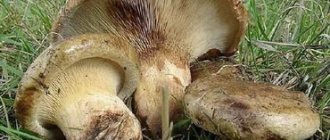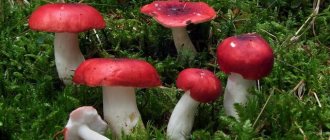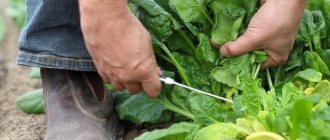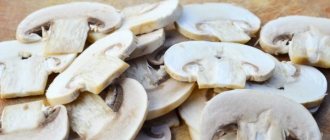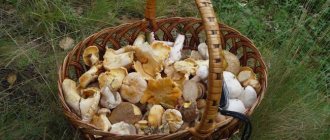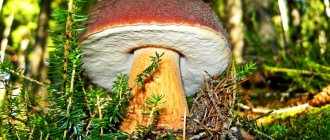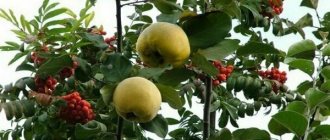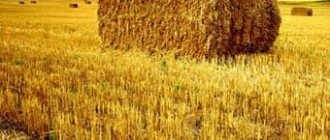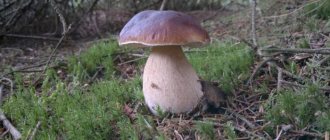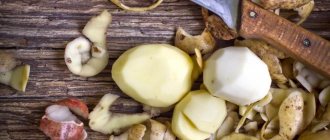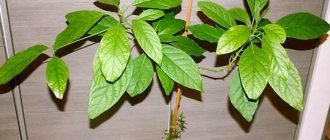Mushrooms
1
1551
Article rating
Kira Stoletova
The main goal of every mushroom picker’s “silent hunt” is to obtain environmentally friendly, tasty and healthy gifts of nature. But sometimes you come across wormy or poisonous mushrooms, so you need to be able to distinguish one from the other.
Is it possible to eat wormy mushrooms?
Why do mushrooms become wormy?
Special insects, fungus gnats and flies, lay eggs on fruiting bodies that have just emerged from the ground. In warm weather, the eggs quickly mature and larvae hatch from them. They feed on mushroom pulp, grow, turn into adult insects and fly away.
The mycelium does not suffer in this case. On the contrary, the larvae help move spores into the soil from the bottom of the cap. The mycelium becomes more viable and increases the number of mushrooms.
The mushroom picker gets upset when a young, delicious fresh boletus or saffron milk cap, cut with a sharp knife, turns out to be wormy. It is believed that wormy mushrooms are unfit for food and their only purpose is to be thrown away.
Is it possible to eat wormy mushrooms?
In fact, the worms in the mushroom are not dangerous to human health. They do not make the mushroom poisonous. Wormy mushrooms are edible. The only difficulty is that no one will like it if there is a pickled or fried worm on his plate.
The most experienced mushroom pickers know how to avoid such trouble. There are ways to process wormy mushrooms that allow you to compete for forest finds and ensure that they end up on the dinner table. The main thing is that the mushroom is not rotten or rotten.
It is better to throw away the old wormy mushroom. Not because he is wormy, but because he is old. This product contains many harmful substances. If you sniff an old boletus or aspen boletus, even one that is not wormy, you can smell the smell of ammonia. But young, strong, not very wormy, fruiting bodies without signs of decomposition are suitable for food.
For industrial harvesting, mushrooms that are less than half infested with worms are considered edible.
Are mushroom worms harmful to humans?
Mushrooms are a healthy product, rich in microelements and vitamins. However, mushrooms often contain worms that eat the mushroom, carrying the spores into the ground, thus spreading the mycelium.
When eating mushrooms, you should be aware of the dangers this product poses to human health, given the high prevalence of worms.
Worms are insect larvae that hatch from eggs laid by fungus gnats and flies. Mushrooms may contain larger worms called wireworms, which are the larvae of click beetles. Most insects become active in dry and sunny weather, so worm-worm fungi are most often found during such periods.
Most people believe that mushroom worms are not dangerous to humans. The idea that a worm will not eat a bad mushroom is true to a certain extent.
There are quite a few mushrooms in the forest that are not damaged, therefore, products that are half or less damaged by insects are most often collected and eaten by people.
When it comes to industrial preparations, wormy mushrooms are preliminarily subjected to special treatment.
Is there a danger of poisoning from mushrooms with worms?
The danger of poisoning from mushroom worms is quite high. Contrary to popular belief, worms can also grow in poisonous mushrooms. There are no wormy hedgehogs or chanterelles.
However, pigs, which cannot be eaten without prior boiling, are highly susceptible to infection. The mere presence of worms does not make mushrooms poisonous.
If you plan to take mushrooms for yourself, you do not need to take specimens with worms. The rule of careful selection should be followed. It should be noted that healthy mushrooms that are kept for some time together with spoiled ones can also be attacked by parasites. The fact is that worm larvae are very gluttonous, so the speed of their transition to healthy specimens is extremely high.
If you nevertheless decide to collect mushrooms with worms, you need to cut off all areas affected by larvae as quickly as possible. This will make it possible to protect healthy mushrooms. Upon arrival home, the mushrooms need to be processed immediately. To do this, you need to cut each affected mushroom into pieces and put it in heavily salted water for 3-5 hours. This way all the larvae will disappear.
There is another way to fight worms. You need to take any wire rack and put mushrooms on it. As they dry out, the worms will fall off and fall down.
Diagnostics
In the human intestine, a large worm is clearly visible on an ultrasound screen. If the parasites are very small in size, it will not be easy to identify them in the body.
In this case, a method such as a blood test for waste products of worms and the presence of pest eggs comes to the rescue.
If there is any suspicion of helminthiasis, you need to examine the stool, because most parasites live in the human intestines.
It should be noted that to make a diagnosis, doctors use the following methods:
Are poisonous mushrooms wormy?
We can say that almost all mushrooms in the forest are wormy, even if the holes in the stem or cap are invisible. It’s just that each mushroom is at its own stage of worminess - noticeable or invisible. Young dense formations are damaged more slowly than old and loose ones. But in humid, hot weather, even young mushrooms are quickly colonized by larvae. It seems that they are already emerging from the ground, eaten away.
Not all mushrooms allow themselves to be eaten by parasites. There are species that are never affected by worms. These are not necessarily poisonous mushrooms. Wormy forest champignons are almost never found.
Everyone is familiar with the appetizing and tasty chanterelles. Having found a clearing covered with chanterelles, you can safely cut off all the specimens in a row. Before placing them in the frying pan, you only need to wash them off the soil and blades of grass.
Some mushroom pickers are very mistaken in believing that worms do not attack poisonous mushrooms. Most of them are tasty food not only for worms, but also for snails. By the way, fly agarics and toadstools do not have a bitter taste or unpleasant odor and are often damaged by worms.
Pavel Sokolovsky: notes for mushroom pickers, part 3
How to take mushrooms correctly: cut or twist?
This is a sore point.
There are mushroom pickers here, so many opinions. Here is what Doctor of Biological Sciences L.V. Garibova writes about this: “Mushroom pickers are often concerned with the question: how to pick mushrooms correctly - cut or twist? The answer is simple: mushrooms should be collected as convenient as possible. Tubular ones are easier to unscrew, they have a dense leg, while plate ones are easier to cut off, since their hollow leg is very fragile and will crumble if you try to unscrew it. The main thing is not to dig up the forest floor, so as not to damage the delicate thin mycelium located in it. The hole formed after the mushroom has been removed should be covered with earth or bedding. With such precautions, the mycelium in this place will bear fruit repeatedly.” Up... What to do if the mushroom turns out to be wormy?
If, after cutting a mushroom, you see that it is wormy, you can proceed in three ways.
Firstly, you don’t have to take it at all. In this case, leaving the mushroom on the ground, and even turning the cap upside down, as is sometimes done, is not worth it. Experienced mushroom pickers advise placing the cap of a wormy mushroom on a spruce branch, or pricking it on a dry one, “spores down.” At the same time, the cap does not rot, but dries, ripens and spreads dust over a large area (you'll see that several new foci of mycelium will appear). In addition, the mushroom dries and in winter, at the most hungry time, it may please some hare, squirrel or bird. Your work is 5 seconds, but the benefits are great. If each mushroom picker gets at least 20-30 “pricks” per trip, then there will be more and more mushrooms. Secondly, you can cut it into two halves along the entire length from the top of the cap to the end of the stem and see if the entire mushroom has become wormy. If it turns out that the cap is clean, you can cut off the stem and take only two halves of the cap. Thirdly, you can take the whole wormy mushroom if it is not completely flabby and old. At home, you need to cut it and put it in highly salted water for several hours (1-2 tablespoons of salt per medium-sized pan). After such a “bath”, all the larvae will crawl out of the mushroom. Then the salt water should be drained and the mushrooms should be washed thoroughly. The disadvantage of this method is that although the larvae crawl out, their waste products may remain in the mushroom. Up... How to “reliably” distinguish a non-poisonous mushroom from a poisonous one?
There is only one correct way - to examine the mushroom and determine its type by its characteristic features. There are no other reliable methods. However, in order to reduce the risks, it is advisable to remember the following tips: 1. Never collect or eat those mushrooms that have a tuberous thickening at the base of the stem, surrounded by a shell (pale toadstool, fly agaric). Attention: collect mushrooms only with a whole stem, so as not to lose sight of this important sign! 2. Never taste mushrooms or lick them. So you still won’t be able to determine anything, and poison (even in microscopic doses) can cause significant harm to the body. 3. If you have even the slightest doubt about the “edibility” of a mushroom, it is better to throw it away. 4. Try not to pick mushrooms after a long period and hot weather - during drought they lose water, their metabolism changes, which leads to the formation of unpleasant toxins even in noble mushrooms. 5. Do not collect old, spoiled, rotten, soft, overripe mushrooms. The balance of substances in them is disturbed. 6. Don’t trust drawn pictures of mushrooms in books - as a rule, they are far from reality. (See also the question about external toxins and radiation below.) There are very dangerous, but unfortunately deeply ingrained misconceptions about supposedly “reliable” methods of identifying poisonous mushrooms. You need to know them, never use them, and warn your friends and neighbors about the danger. Attention: the methods below are dangerous to life! They must not be used under any circumstances! Misconception 1. “Poisonous mushrooms can be “identified” using a silver spoon or onion.” Mountain experts claim that if you put a silver spoon in a saucepan with soaked mushrooms, then, if there are poisonous mushrooms, the spoon will turn black, and if you put an onion, it will turn brown. This is wrong. This testing method is similar to checking a gas leak with a burning match - it works until the first (and last) explosion. Misconception 2. “Insects do not eat poisonous mushrooms” Allegedly, if a mushroom is thoroughly nibbled by a snail, this indicates its suitability for food. This is wrong. The human body is very different from the insect body, and what is suitable for snail food can be deadly for humans. Misconception 3. “Poisonous mushrooms become edible after salting or pickling.” This is completely untrue. Pale toadstool can send you to the next world both in salted and pickled form. Misconception 4. “The poison from mushrooms can be removed by boiling them for several hours.” This is a dangerous mistake. The poisons of most mushrooms are heat-resistant and it is impossible to turn a toadstool into a honey fungus by boiling. Up…
How to save a wormy mushroom
Worms cannot tolerate salt. If you soak mushrooms in a saline solution, the larvae begin to leave the fruit caps and stems of the mushrooms. They can be removed from the surface of the water with a strainer. This sight will seem unpleasant to many, but the goal will be achieved - not a single parasite will remain in the mushrooms.
Processing of wormy mushrooms:
- Cut into large pieces.
- Place in cold, highly salted water.
- Leave for 3-4 hours.
The worms do not tolerate salt and begin to leave the fruit caps and stems of the mushrooms. They can be removed from the surface of the water with a strainer. The sight may seem unpleasant to many, but the goal will be achieved - not a single parasite will remain in the mushrooms.
Mushrooms soaked for 3-4 hours in saline solution are removed and washed. Then any dishes are prepared from them: boiled, fried, salted and pickled.
To get rid of insects, you can use not only salt, but also the sun. Drying cleans the fruiting bodies of all types of worms. Mushrooms laid out or hung to dry become an extremely uncomfortable place for the larvae, who are in a hurry to leave their “home.”
Dried mushrooms are stored in glass jars closed with a nylon lid. Shelf life 2 years. During storage, larvae do not “come to life” in them and new insects do not appear.
The larvae that fall out of the fruiting bodies during drying can be used - aquarium fish love mushroom worms.
Rehabilitation of worm fungus
The easiest way to get rid of this problem is to throw out the infected mushroom. Cut off the fried parts, boil in several waters, pour in acetic acid, dry-salt, or put the caps under the bushes in the country with the thought that someday you will grow mushrooms in your own area - the choice of alternative depends on your responsibility and attitude to your health.
Unfortunately, or fortunately, modern cooking does not know methods for preparing dishes with such an extreme composition. Wormy mushrooms will not please any sane gourmet even with the most discerning taste. And one last piece of advice. Never bring up the topic of wormy mushrooms while sitting at the table. Not all your guests will understand the meaning of your words if you serve freshly collected and cooked wild mushrooms.
Bon appetit and attentive to you!
0
Fresh mushrooms, collected in the forest or bought at the market, need to be quickly prepared for culinary processing. Only then will they retain their taste and be elastic and aromatic.
Dishes made from properly peeled and chopped mushrooms turn out beautiful and appetizing.
The main rule is that cleaning mushrooms cannot be put off for too long. Cut mushrooms in a warm room deteriorate and quickly become flabby. They easily lose their unique forest spirit. After a trip to the forest, you need to get down to business as soon as possible.
If this is not possible, you can store your prey until the morning in the refrigerator or other cool place, for example, in a cellar.
What tool should I use to quickly clean?
To do this you will need a small sharp knife. The thin tip is convenient for removing damaged areas and cleaning out debris. A sharp blade will cut fragile flesh easily and will not crumble it.
A damp cloth or paper towels are useful for wiping off dried-on dirt.
Mushroom juice contains substances that turn your fingertips black. Use gloves to protect your hands while working.
Prepare an empty container for clean mushrooms and water for washing.
Is it necessary to wash?
When washed, mushrooms absorb a lot of moisture and lose their taste. Therefore, it is better to limit yourself to dry cleaning where possible. Mushrooms that you are going to dry for the winter should not be wet under any circumstances; they can only be wiped with a damp cloth. Before frying, it is also better to do without washing, but if necessary, you can quickly rinse with water.
- cooking;
- pickling;
- marinating.
Mushrooms for pickling, which have a bitter taste, are soaked in cold water for one or two days, regularly replacing it with fresh water.
Preliminary processing
The first stage of cleaning takes place in the forest. Large debris is removed from the found mushroom: twigs, leaves, pine needles. The root is cleaned with a knife from soil and sand or simply cut off to check for worms inside.
Under no circumstances should you take unfamiliar varieties. Even one inedible mushroom in a basket can lead to poisoning.
Also leave very wormy, moldy and very old specimens in the forest. They will spoil the taste of food and can be harmful to health.
Mushrooms purchased in a store or market have already undergone primary purification. Only small debris or traces of soil remain on them. At home, such mushrooms should be sorted again, damaged areas should be trimmed and, if necessary, washed. After this, you can cook and eat them.
White
Porcini mushrooms are not only the most delicious, they are also easy to clean. They usually grow in light, dry places or in moss. For these noble beauties, the soil is only cut around the circumference of the root. It is enough to wipe the hat or fan it with a brush. Carefully cut off areas damaged by forest inhabitants.
White ones, which are only slightly affected by worms, can be used for harvesting for the winter. During the drying process, the worms do not eat the mushroom from the inside, but crawl out.
boletus
Boletus mushrooms are often wormy; to check, the tip of their stem is immediately cut off. For large specimens, for the same purpose, the cap is separated and cut in half. There may be worms at the bottom of the cap, even if the rest of the mushroom is not affected by them. Then the spongy layer is completely removed. The leg is cleaned with a knife, removing the top layer of skin, although some mushroom pickers believe that this is not necessary.
Older boletuses have legs that become hard and fibrous. In cooking, it is better not to use such parts at all.
The video shows how to properly clean boletus mushrooms.
Boletus
Boletus mushrooms are processed in the same way as boletus mushrooms. The top layer is scraped off the stem. There is no need to remove the skin from the cap; just wipe off the dirt with a cloth. The spongy bottom of the cap should be checked for the presence of worms and fungus gnat larvae. Boletuses are distinguished by the fact that they turn blue and then turn black when cut. To prevent this from happening, it is recommended to immediately throw the pieces into water after cutting.
Cute mushrooms grow in large families, and it’s not easy to cope with a whole mountain of butter mushrooms. Difficulties arise due to the slippery film that covers the heads of the oil.
When cooked, it becomes rough and slightly bitter. Hats must be cleaned. To prevent the film from sticking to your hands, the butter is dried. Another popular way is to pour boiling water over them.
You can lubricate your hands with oil or wear gloves, otherwise the sticky skin will darken your fingertips.
Otherwise, young butterflies only have their legs trimmed. In older ones, you can lightly scrape the stem and remove the remnants of the collar under the cap.
Chanterelles
Red aromatic fungi are remarkable because they contain a substance that repels worms. They do not need to be peeled or any parts separated. For cleaning, only cut off the lower third of the stem with traces of soil. Chanterelles have a rather bizarre shape. Earth or needles get stuck between the plates, which are not easy to remove.
Fortunately, chanterelles can be washed in plenty of water. To make them more elastic and not break, they are doused with boiling water. This simplifies subsequent processing.
For large champignons, remove the skin from the caps. This is done by simply moving the knife, from the edge to the center. You can leave the top layer on the caps of young mushrooms. If the legs of the champignons are too harsh, cut them shorter or remove them completely. The collar is edible and does not need to be peeled off.
When washed, champignons absorb water strongly and lose their taste. Try to do it dry and shake off all the debris with a cloth.
If that doesn’t work, you can quickly rinse and drain the champignons in a colander.
Oyster mushrooms
Oyster mushrooms are very convenient to clean. They grow on tree trunks, so grass and needles practically do not stick to them. These mushrooms are good only when they are young; when sorting, old specimens are immediately removed and put aside. Select for food those whose cap is no more than 10 cm. Cut off the bottom of the stem, damaged edges and dried places on the fruiting body. It is convenient to wash oyster mushrooms in a sieve under running water, but you can also soak them in a basin.
Honey mushrooms
Honey mushrooms with long thin legs grow on stumps and practically do not get dirty. You just need to collect leaves and needles from them and trim the tips of the legs. If the lower part of the leg is too harsh, it is also cut off. The skin is not removed from the cap. However, rotten and darkened areas must be removed.
It is believed that saffron milk caps are the cleanest mushrooms, but they still need to be processed. Sticky blades of grass, twigs and needles are cleaned off with a brush or knife.
Saffron milk caps are often found on sandy soils; sand sticks to the roots and on the underside of the caps. It can be easily washed off along with other foreign particles by briefly soaking the saffron milk caps in a basin. When collecting in the forest, they are not pulled out of the ground by the roots, but immediately cut off with a knife. If you brought them home whole, then the roots will have to be cut off.
Milk mushrooms
The milk mushrooms are first simply washed and cleared of sand and other debris. They are then soaked in cold water for three days to remove the bitter taste. The water needs to be changed several times a day. Place the container with mushrooms in a cool place so that they do not sour. Using a brush, knife or hard sponge, scrape the soaked milk mushrooms until white. Then the damaged areas are finally washed and removed.
First of all, the raincoats are washed, carefully rubbing off the dirt with your fingertips. The outer layer, similar to a soft shell, is separated from the pulp. For large mushrooms, it is convenient to remove this skin with a knife. For control, spherical fruiting bodies are cut in half. If the flesh is white and elastic, it can be eaten.
Raincoats with a yellowish center should be thrown away. They are either old or damaged. Puffballs are not poisonous, but a mushroom with a bad taste will ruin the dish.
After dry cleaning, mushrooms can be stored in the refrigerator for a short time, but after washing, they must be cooked immediately. For soup, solyanka or preparations (except for drying), you can boil them for future use with a small amount of salt and then use them for several days.
To ensure that the culinary masterpiece subsequently looks beautiful, the mushrooms are carefully cut into pieces of equal size. The fibrous stems are cut crosswise, and the caps into triangular segments. Small mushrooms can be eaten whole; they look especially beautiful in jars with marinade. The goal of careful and proper processing is to preserve the valuable qualities of mushrooms in order to fully reveal them when preparing delicious dishes.
oyster mushrooms
wholesale
throughout Russia
Before you deal with the question of how to get rid of worms in mushrooms
, it is necessary to make clarification. By this general name we mean all the larvae that can be found in fruiting bodies. Some of them prefer only young mushrooms. At the first signs of wilting, such “living creatures” independently leave their habitat, leaving behind only the appropriate passages. Others feed actively, forming large cavities filled with waste from their own life.
More complete information on this issue can be found in specialized works on mycology. Some experts and scientists claim that mushrooms (in different types and forms) can harbor hundreds of species of larvae, beetles, mosquitoes, and other insects.
What to do with white wormy mushrooms
Not only humans like porcini mushrooms. This is the most delicious mushroom, for which there are always many people who want it. It is eaten by animals, birds and slugs. There are about 300 species of insects alone that settle in the fruiting bodies of porcini mushrooms.
Porcini mushrooms, just like the rest, can be soaked in a saline solution and dried to remove larvae.
Insects prefer to fly through the forest in dry, warm weather. Therefore, in the summer, porcini mushrooms quickly become wormy. In the fall, when it rains and is cool, you can count on intact prey.
So, a wormy mushroom is not always a candidate for the trash bin. But everyone decides for himself whether he will eat dishes from forest delicacies, knowing that they were once home to numerous larvae.
